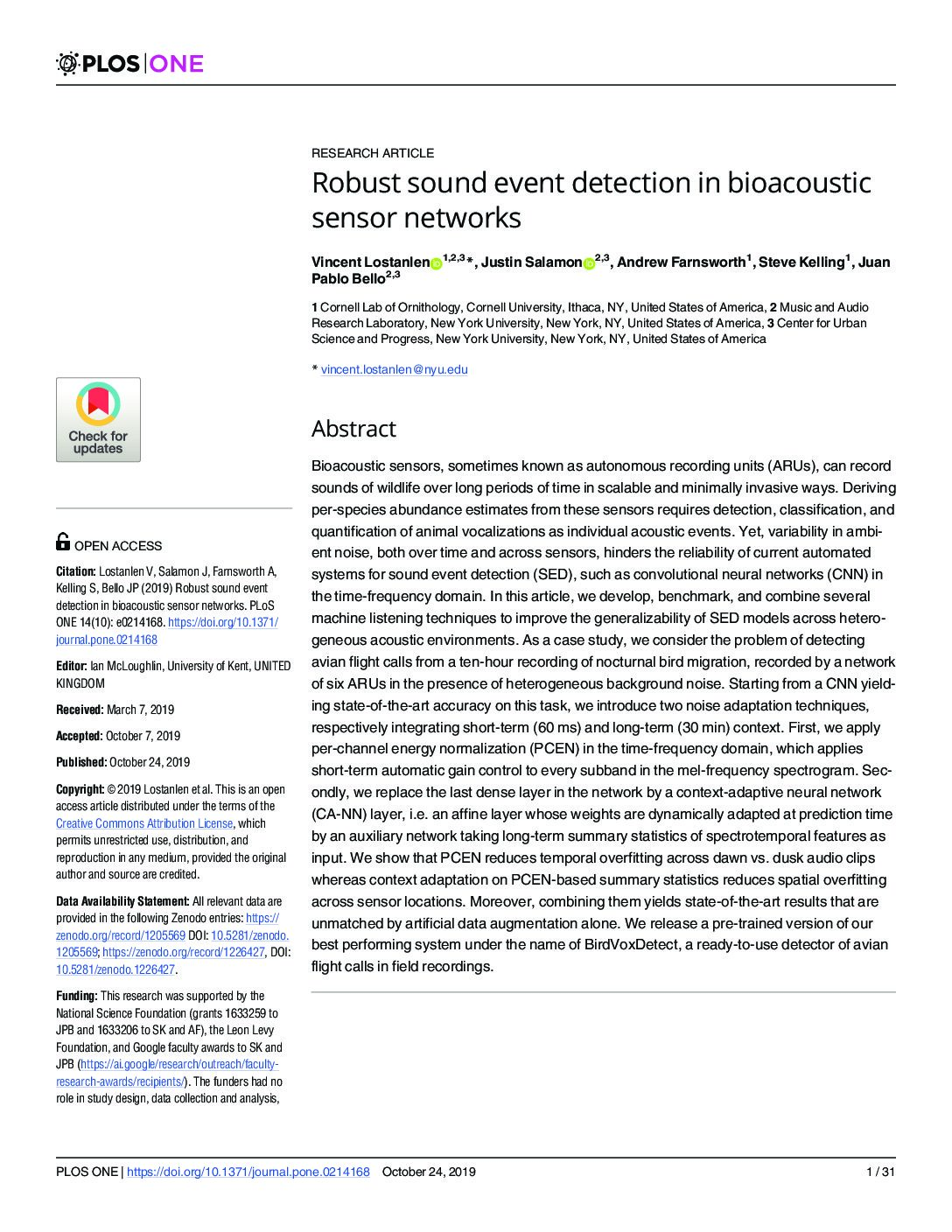Robust sound event detection in bioacoustic sensor networks
Bioacoustic sensors, sometimes known as autonomous recording units (ARUs), can record sounds of wildlife over long periods of time in scalable and minimally invasive ways. Deriving per-species abundance estimates from these sensors requires detection, classification, and quantification of animal vocalizations as individual acoustic events. Yet, variability in ambient noise, both over time and across sensors, hinders the reliability of current automated systems for sound event detection (SED), such as convolutional neural networks (CNN) in the time-frequency domain. In this article, we develop, benchmark, and combine several machine listening techniques to improve the generalizability of SED models across heterogeneous acoustic environments. As a case study, we consider the problem of detecting avian flight calls from a ten-hour recording of nocturnal bird migration, recorded by a network of six ARUs in the presence of heterogeneous background noise. Starting from a CNN yielding state-of-the-art accuracy on this task, we introduce two noise adaptation techniques, respectively integrating short-term (60 milliseconds) and long-term (30 minutes) context. First, we apply per-channel energy normalization (PCEN) in the time-frequency domain, which applies short-term automatic gain control to every subband in the mel-frequency spectrogram. Secondly, we replace the last dense layer in the network by a context-adaptive neural network (CA-NN) layer. Combining them yields state-of-the-art results that are unmatched by artificial data augmentation alone. We release a pre-trained version of our best performing system under the name of BirdVoxDetect, a ready-to-use detector of avian flight calls in field recordings.

